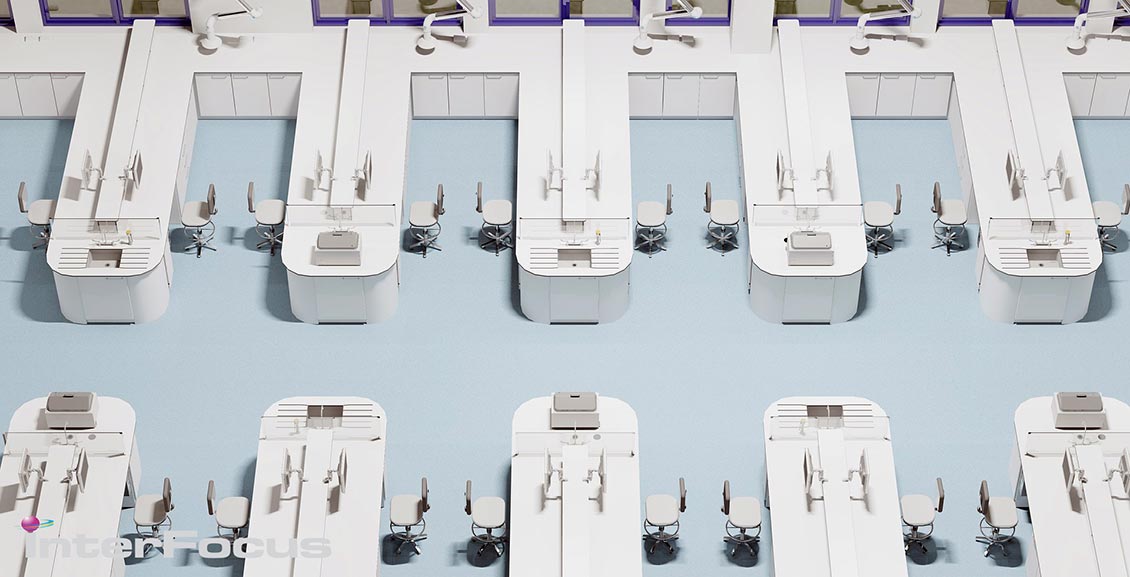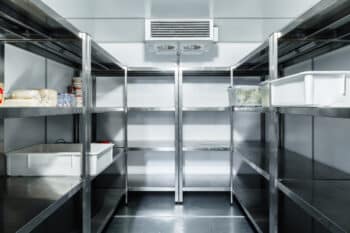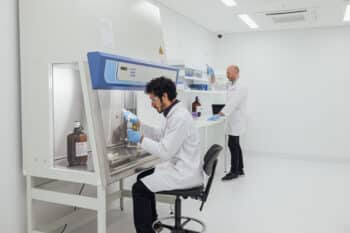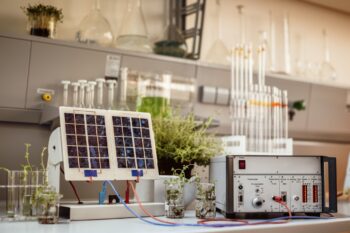Improving laboratory efficiency
An effectively optimised and intelligently designed laboratory can significantly improve the quality and volume of output produced by the research team. Simple changes during the design process could be the difference between an effective and ineffective lab – and these six design features could help you create a laboratory your research team will love.
Maximum Storage
Although storage is far from the sexiest addition to the laboratory, it can have a huge influence over the efficiency of a research suite. Access to all important apparatus and pieces of equipment can simplify the process of completing laborious research tasks – increasing actual time spent working.
During the design process, it is vitally important to consider all the storage requirements of the laboratory. Considering work teams and their necessities will help you effectively plan where to base storage and how much to provide.

Improved Sanitation Access
Sanitation and hygiene are essential in the laboratory – with all workers who come in contact with contaminants and hazardous materials requiring access to soap dispensers and paper towels at all times. Researchers could lose significant amounts of time every working day if the sanitation provisions are not well-placed and plentiful. Position all sanitation areas in easy-to-reach and convenient places to maximise laboratory efficiency.
Defined Tour Routes
Introducing new bodies into a lab, whether they are potential investors or candidate researchers, can cause endless problems – making it difficult for the team to complete tasks as everyone is crammed in tightly. By implementing defined tour routes, the research team are allowed to continue their work undisturbed and the tour guests are able to witness the unspoiled action.
Exposed Piping
Although exposed piping and brickwork are perhaps two of the most important design features to include in a trendy bar, the former can cause safety problems within a lab environment. Where possible try to avoid using fixed piping, and always cover up any exposed piping. Keep the piping close to the walls at all times to reduce the space it uses.
Intelligently Stored Pure Water Tanks
If you need to implement pure water tanks or devices on or around the work benches, placing them on top of fixtures can take up a significant amount of space. Placing the water tanks and devices underneath the work benches can help save research space whilst retaining the same access to pure water.
Inconvenient Gas Fixtures
The immobility of gas fixtures means their positioning needs to be carefully selected. Too far away and they simply become too inconvenient for efficient usage, and too closely placed together and they’re impossible to use alongside larger and more cumbersome pieces of equipment. Consider all their uses in your laboratory in the short term and long term, and you will be able to plan efficiently placed gas fixtures.
At InterFocus, we are dedicated to helping you create the perfect commercial laboratories. For more information about how we can help you and your research team, visit our website or call us now on 01223 894833.



